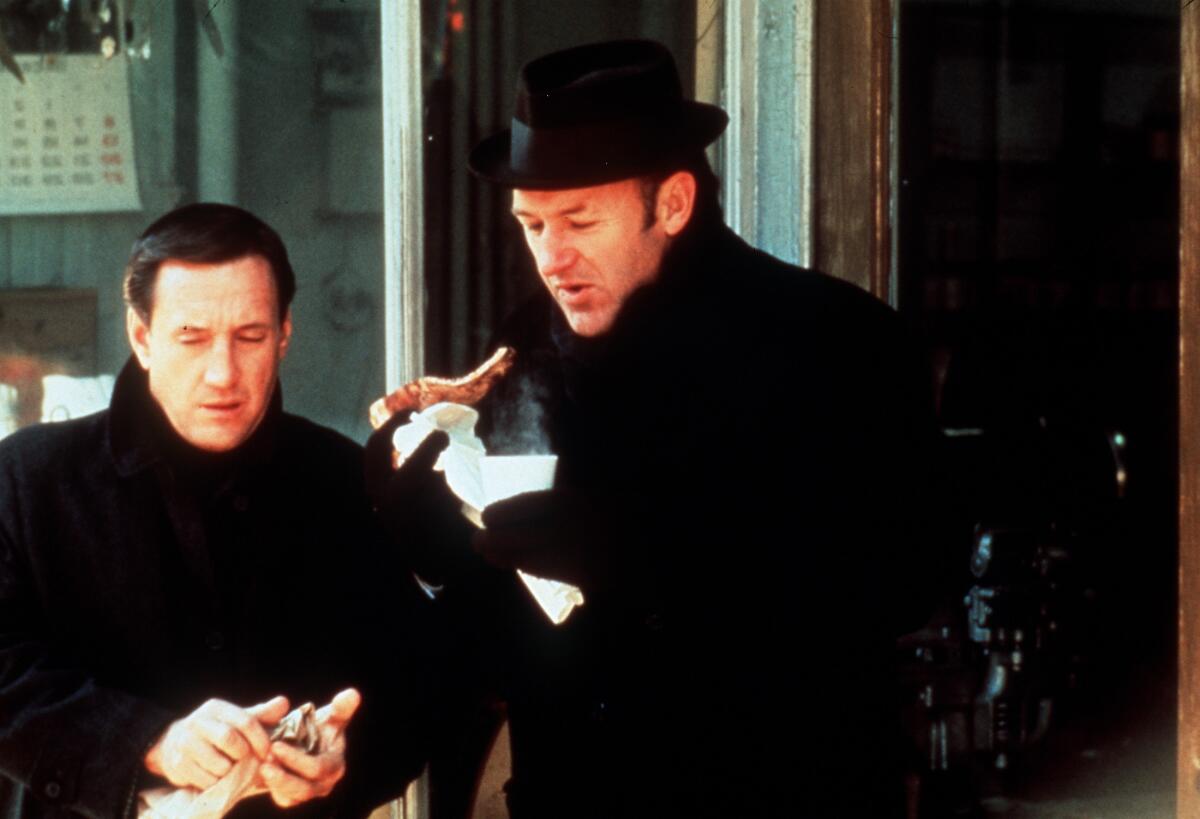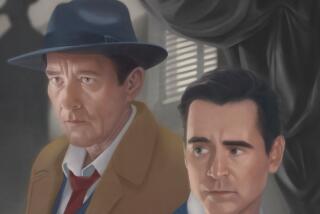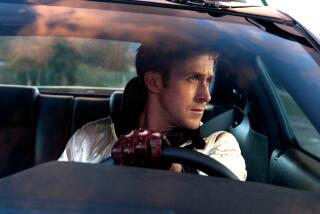From the Archives: High Adventure in âConnectionâ

âThe French Connection,â which opens today at the Egyptian in Hollywood, the UA in Westwood and elsewhere, is by a long revolver shot the best cops-and-robbers movie since âBullitt.â In fact, everything that made âBullittâ a success makes âThe French Connectionâ even more successful. There is a chase more exciting than that famous chase through San Francisco (which Iâd have said couldnât be improved upon): more exciting because we seem to be participants, not spectators.
This one pits a detective in a commandeered car against an elevated train commandeered by a killer. The scene is Brooklyn and the horn-blowing, fender-crunching, slewing, shrieking, track-clacking action is heart-stopping. As they say these days, FAN-tastic.
Lesson Learned Well
The âConnectionâ connection with âBullittâ is not accidental. Philip DâAntoni produced both and he learned the lessons of âBullittâ well. There is the same celebration of real places and actual things.
No studio setups were used and âThe French Connectionâ has the gritty authenticity of a first-rate documentary. When it looks cold outside, baby, you know it was. It is a police drama and, like âBullittâ only more so, it takes it for granted that detectives are human beings with the usual quota of frailties, but also (if we are lucky) a compensating, compulsive drive to catch criminals.
âThe French Connectionâ is every bit as entertaining as âBullitt,â a slam-bang, plain-spoken, sardonically funny, furiously paced melodrama. But because it has dropped the romance and the starry glamor of Steve McQueen and added a strong sociological concern, âThe French Connectionâ is even more thought-provoking and reverberating.
The story is based on an actual case in which two Manhattan narcotics detectives, working initially on a hunch and their own time, patiently watched a suspect until he led them to a haul of heroin worth $32 million at street prices, the largest single capture in history. The case made a best seller for Robin (âThe Green Beretsâ) Moore. The detectives are played by Gene Hackman and Roy Scheider, and they create an often unflattering credibility which is powerful indeed. The real life detectives, Eddie Egan and Sonny Grosso, have small rules in the movie and Egan is in fact very, very good as a captain of the narcotics squad. Grosso plays an FBI man assigned to help the detectives on the case.
Ernest Tidyman wrote the crackling good script which, like âBullittâs,â begins in total, ensnaring mystification. William Friedkin directed and it is as good a job as Iâve seen in a good while. Owen Roizmanâs cinematography absolutely captures the look and feel of New York, borough by brackish borough.
Fernando Rey is the elegant Frenchman who deals in dope behind a mask of well-heeled respectability. Marcel Bozzuffi (the assassin in âZâ) is his strong arm. Tony LoBianco is the American connection; Harold Gary is the respectable high-level American dope dealer. All are excellent.
Like âZ,â the the movie ends on a note of irony. The detectives are transferred out of narcotics; the criminals escape with light sentences or get away all together. (The story has been somewhat fictionalized and thereâs a shooting which didnât happen.)
âThe French Connectionâ seems to have a message â several, in fact â although Iâm not entirely sure that the messages are exclusively those which the producers (DâAntoni was associated with G. David Shine and author Robin Moore) had in mind.
Superficially, the messages that the detectives live in misery and do their jobs out of a dogged devotion; the top dog peddlers live in opulence and get away or are coddled by the courts. (There are ironic scenes of the French peddlers wining and dining in elegant restaurants while Hackman shivers in the cold, gulping coffee from a plastic cup.)
Both messages are persuasive but watching âThe French Connectionâ it is also possible to realize how catastrophically a half-centuryâs attempt to punish narcotics out of existence have failed and have in fact acted like kerosene on a blaze. The inferences from the movie are all depressing and suggested among other things both the cops and the robbers have become a law unto themselves. A final positive word is due Don Ellis, the composerâband leader whose rocketing, propulsive big band score, dominated by rousing trombones, is a major asset in creating the movieâs pace and moods.
More to Read
Only good movies
Get the Indie Focus newsletter, Mark Olsen's weekly guide to the world of cinema.
You may occasionally receive promotional content from the Los Angeles Times.










